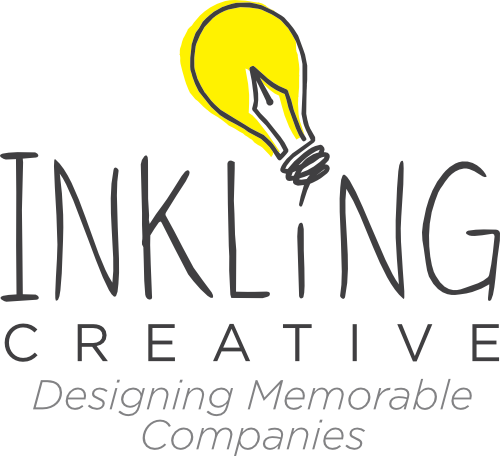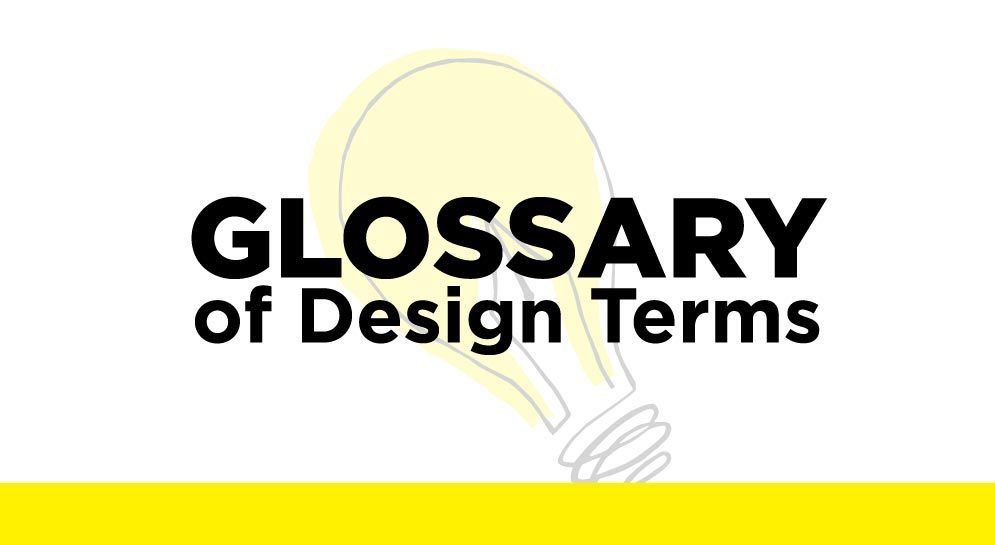Below is a compilation of some of the terms and definitions I used in my "How to Improve Your Design" series of blog posts. For a PDF of this list, please sign up on the sidebar to receive access to my "Freebies" page.
More...
Additive Color: color created by light that is emitted (like your computer screen). The additive colors are red, green, and blue (RGB; the various combinations of these colors create the large spectrum that you see on your computer screen or TV). The addition of all three colors creates white
Alignment: the lining up of the edges of an object
Asymmetrical Balance: it is accomplished through contrast and it involves balancing an axis by the summing up of different elements on both sides with equal visual weight
Balance: the equal distribution of visual “weight” in art; it occurs around a vertical axis
Color Temperature: a psychological way to describe a color is; certain colors conjure certain feelings
Continuation: grouping by connection
Contrast: a principle employed, such as color, size, position, texture, shape, or orientation, to set elements apart
Curvilinear: a shape with curved edges and/or rounded corners
Crystallographic Balance: an allover pattern; emphasis is uniform
Element (of design): what a design or piece of art is made of; a basic piece, or building block of a design; what an artist uses to create a design
Emphasis: an element of design that draws specific attention to itself (see exmples below)

Hue: refers to a color’s purest state, such as red, orange, yellow, green, blue, or purple; can also be a gradation of one of these pure colors.
Line: what connects two points; it can be straight or curved, thin or thick, expressive or controlled, delicate or bold
Movement: what an artist uses to guide a viewer’s eye in, through, and out of a composition
Negative space: the space around the positive space; sometimes used to create a shape
Positive Space: the actual existence of an objective or shape and the position of various objects
Principle (of design): a general law or rule from which all other rules or guidelines come; a general rule followed when making a design
Proportion: the relative size and scale of various elements in a design; the relationship between objects, or parts, to the whole
Proximity: grouping by nearness
Radial Balance: when different elements are arranged around a central point; when objects are placed in such a way that the visual weight is distributed equally (i.e. a flower)
Repetition: grouping by similarity
Rectilinear: a shape with straight edges and angular corners
Saturation: also known as the chroma or intensity of a color; refers to a color’s brightness or dullness.
Saturation: also known as the chroma or intensity of a color; refers to a color’s brightness or dullness
Shape: a two-dimensional object; it has width and height, but no depth or volume as a three-dimensional object does; can be rectilinear or curvilinear
Subtractive Color: color created from light reflecting off of a pigmented surface – anything that is printed. The subtractive colors are cyan, magenta, yellow, and black (CMYK); the combinations of these colors result in dark colors; the absence (or subtraction) of these colors results in white (a lack of pigment)
Symmetrical Balance: formal balance, it is the easiest way to achieve stability; created by producing the reverse of an image (or a mirror-image) on the opposite side of a vertical axis
Unity: whether a piece of art or a design is harmonious or cohesive
Value: the lightness or darkness of a color
Variety: the differences between elements of a design; what makes a design interesting
Visual Hierarchy: influences the order in which the human eye sees elements in a composition
Visual Weight: the balance, or weight, of elements in an image; it is created and influenced by many things such as position, size, isolation, texture, value and value contrast, orientation, quantity, shape, and color
For a PDF of this list, please sign up below to receive access to my "Freebies" page.

